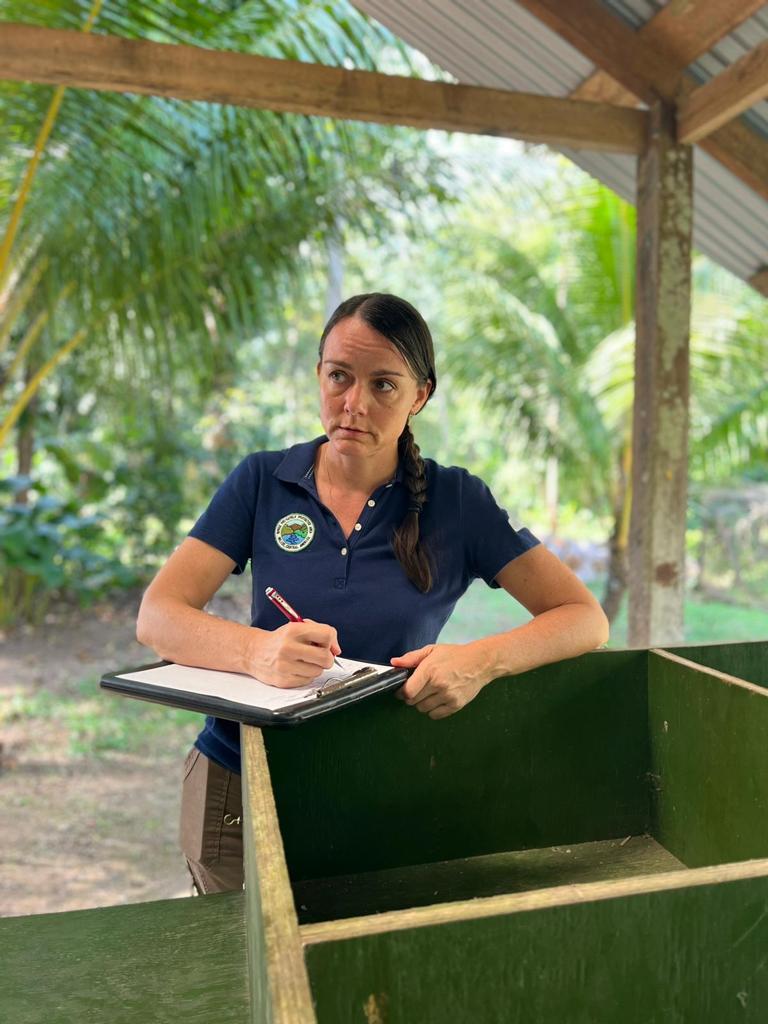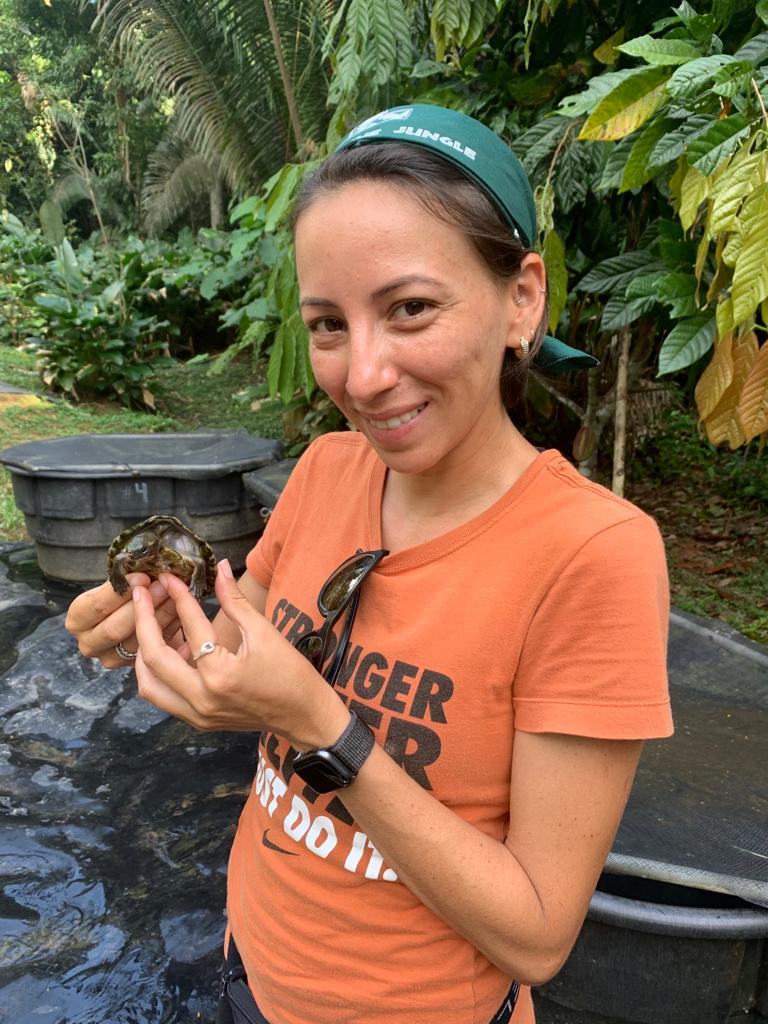Ribbon Cutting Ceremony for The Hammock
/1 Comment/in Blog, Facilities /by Tyler Sanville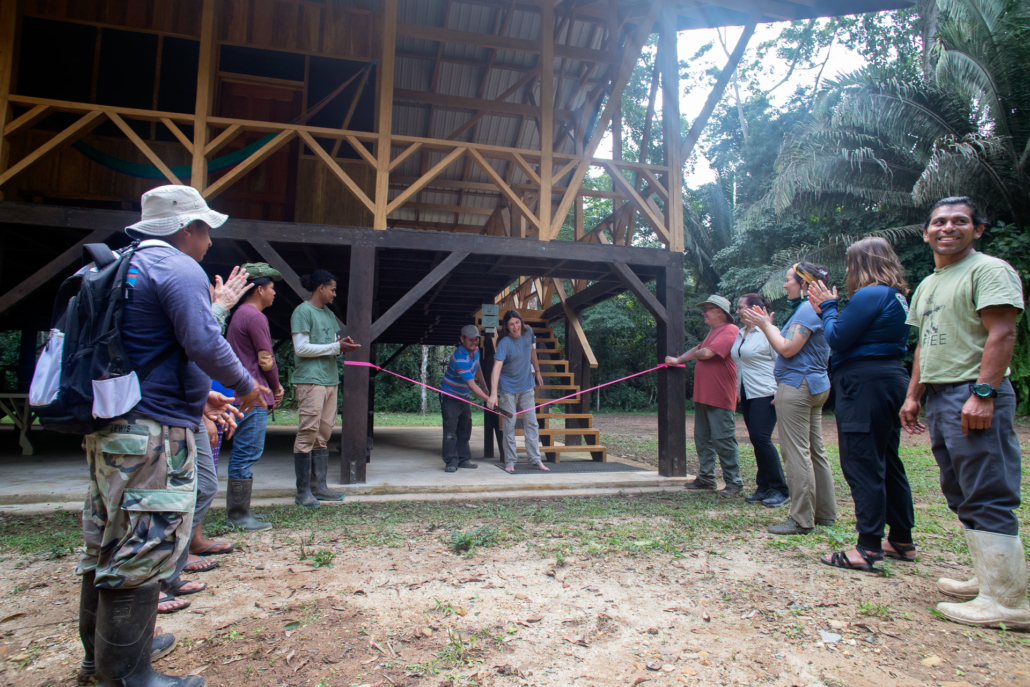
In February 2022, BFREE Executive Director, Jacob Marlin, and BFREE Facilities Manager, Marcelino Pop, using a machete, cut the fluorescent pink flagging tape to celebrate the completion of BFREE’s newest facility, the Hammock. Staff and visiting guests, and volunteers cheered along for this momentous occasion.
The Hammock remains in the exact location as BFREE’s Bunkhouse that was built in 1998—situated 200m from the river and under the hulking shade of a massive 140-foot Ceiba tree. Replacing the original four rooms with twelve bunk beds is now six-private rooms and a 10’x’32’ open-air veranda and observation deck serving as a great spot to view wildlife like the Harpy eagle!
With twenty-four beds in total, the bunkhouse can now sleep 24 – 28 individuals. The four corner rooms have one full bed and twin bunk beds, and the two center rooms have two triple bunk beds. Each room has a light and fan. Next to every bed is an electrical outlet, nightstand, and a locked safe box. The Hammock was designed to accommodate all types of visitation and now includes other hangout and relaxing spaces amongst the many hammocks hanging from the veranda and a place to play ping-pong under the building.
The most exciting aspect of this new building is that it is nearly 100% zero waste. The original bunkhouse was dismantled board by board, and each piece of material was evaluated to determine if it could be reused, including boards, nails, and roofing. With the exception of the new roof and tongue and groove flooring, all of the material used to build the Hammock came from salvaged dead trees from the BFREE property. The trees were then milled into lumber by chainsaw. Paying tribute to the trees of BFREE, each of the Hammock’s six rooms is named after a tree species found on the BFREE Reserve: Salmwood, Santa Maria, Cantimo, Yemery, Ceiba, and Sapodilla.
The Hammock housed its first visitors in February and many of the rooms have been occupied over the last few weeks. We look forward to many more guests enjoying this beautiful facility for years to come!
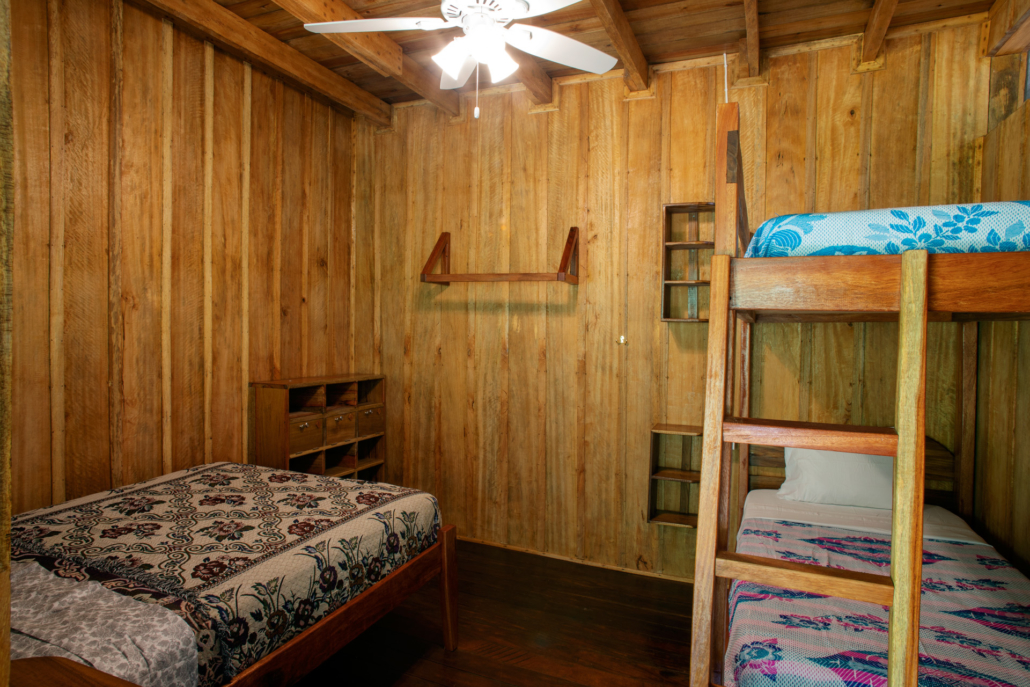
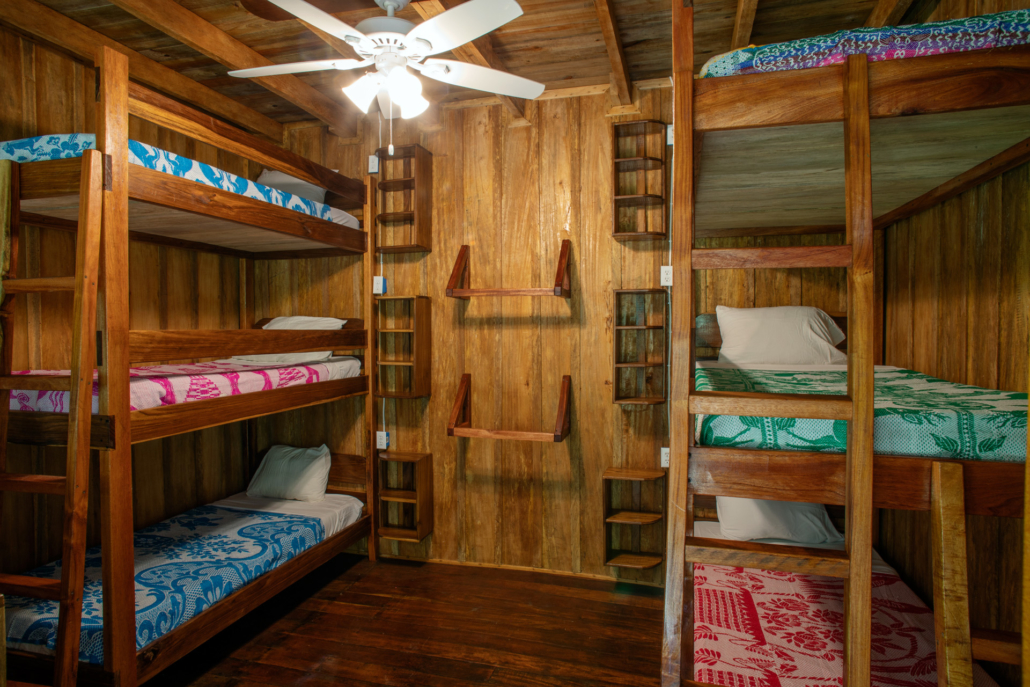
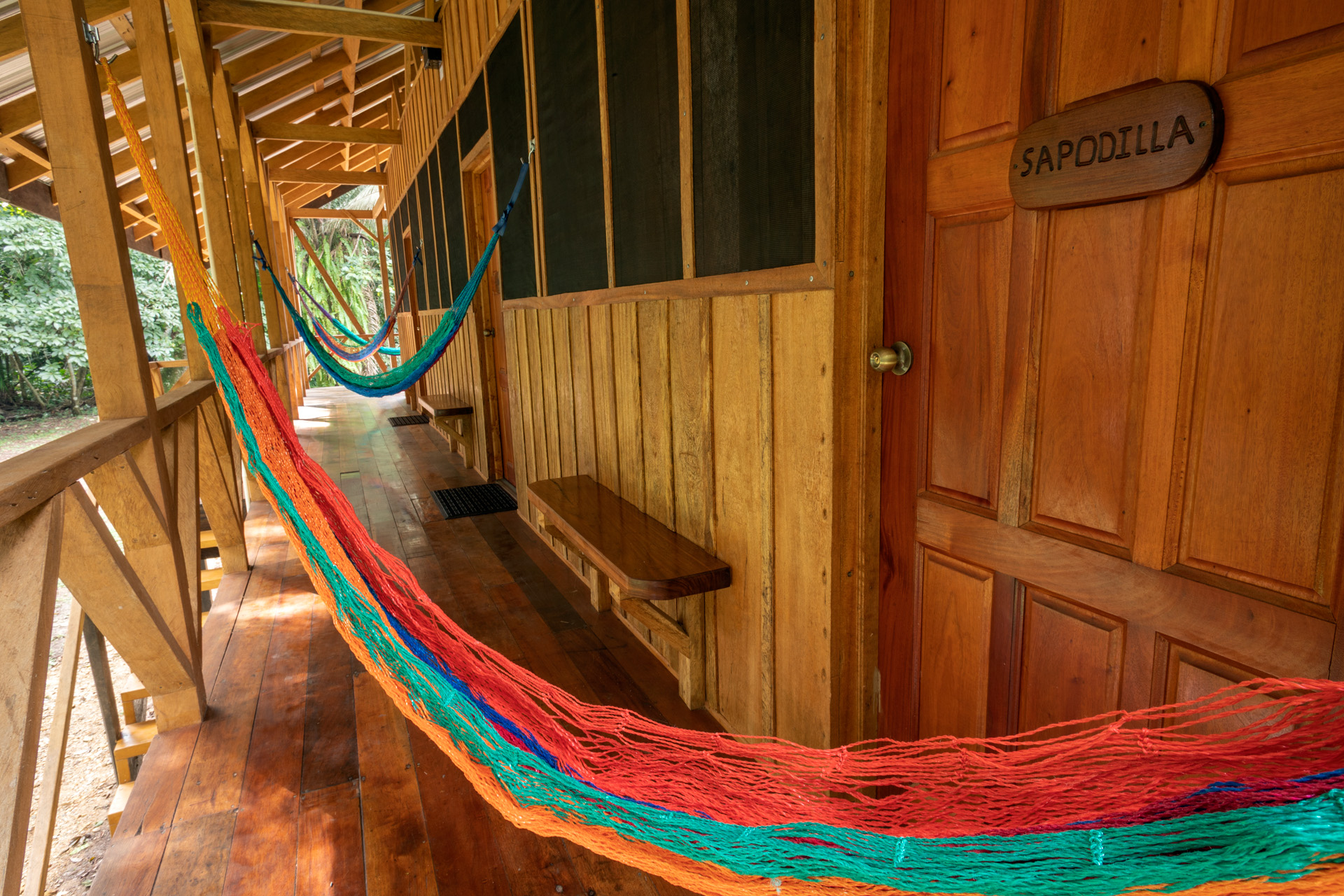
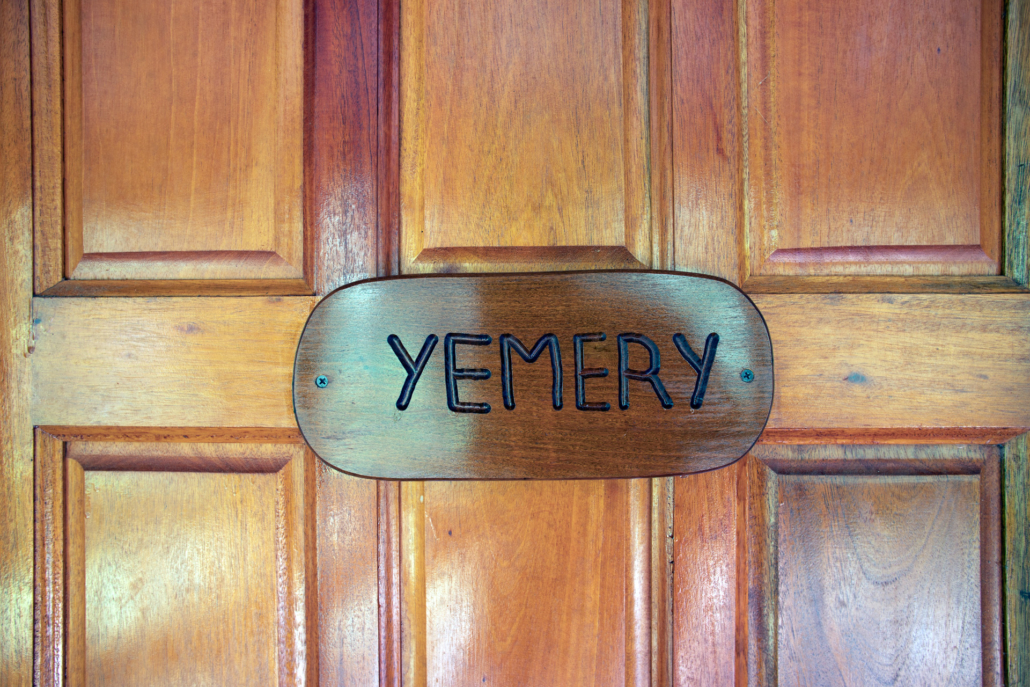
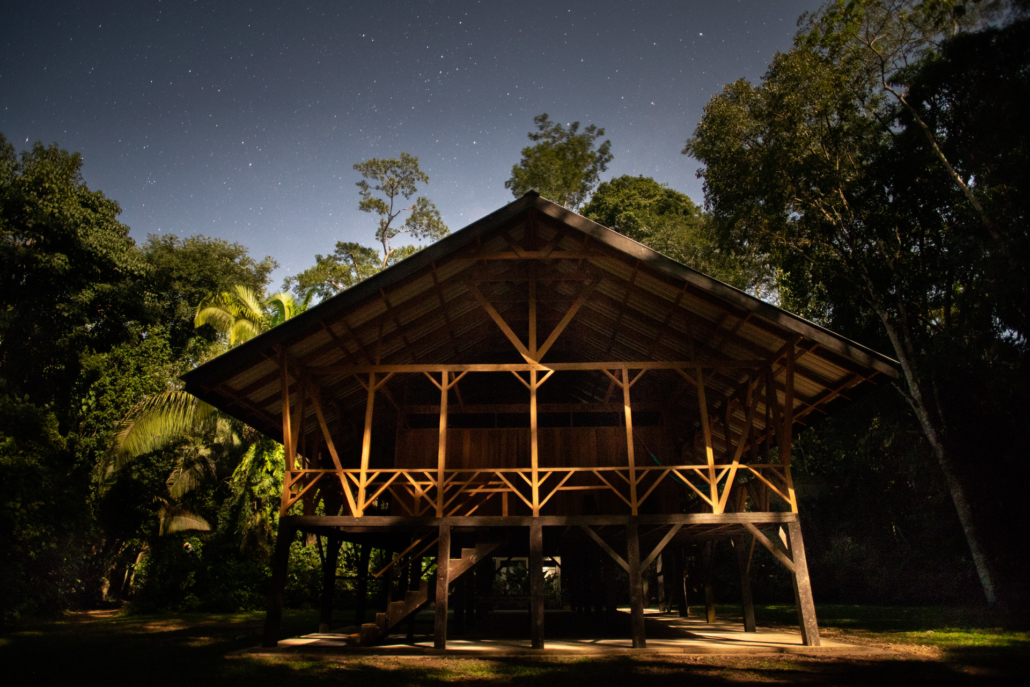
Students and faculty from Kutztown University visit BFREE to initiate research projects focused on the endangered Yucatán black howler monkey
/0 Comments/in Blog, Education, Field Course, Research /by BFREE ContactDrs. Chris Habeck and Matt Stone and four Kutztown University students majoring in Environmental Science (Corinne Ruggeiro and Nicole Prantow) and Biology (Stefan Grove and Sherry Jimenez) visited BFREE during January 2022 to explore the calling behaviors, movement patterns, and functional role that the endangered Yucatan black howler monkey plays in the neotropical forests of Belize. Here is their story.
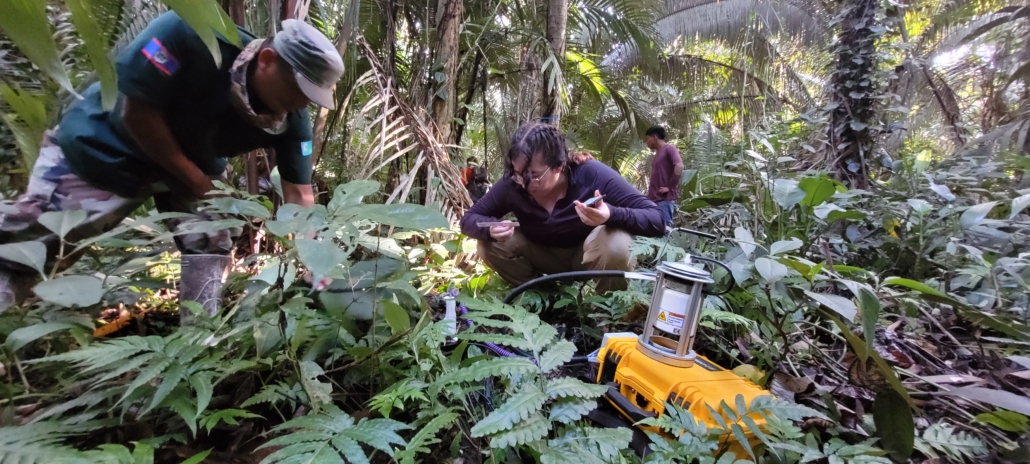
By Dr. Chris Habeck
Monkeying around with climate change: howler monkeys and carbon sequestration in the tropical biome
We are witnessing dramatic shifts in global climate brought on by human population growth and technological advancement. Deforestation and the use of fossil fuels is causing global temperatures to rise, more extreme weather events, and severe pressures on the natural resources needed for the maintenance of biodiversity. Carbon is at the heart of these problems. When fossil fuels are burned and land is cleared through deforestation, the concentration of a potent greenhouse gas, carbon dioxide (CO2), increases in the atmosphere. Greenhouse gases are not inherently bad. In fact, they allow life to exist on this planet by regulating global temperatures within physiological requirements. However, the abrupt increase in atmospheric CO2 over the past several decades is alarming in that species and ecosystems are struggling – often unsuccessfully – to cope with the rapid environmental changes. Scientists are currently on the hunt for strategies to mitigate the impacts of climate change. Obviously, a reduction in fossil fuel use and land clearing are options to slow the increase of atmospheric CO2, but we also need to prioritize the removal of excess CO2 that is already in the atmosphere to minimize the current impacts of climate change. One way to achieve this goal is to maximize the ability of natural systems to sequester carbon from the atmosphere for long-term storage. Protecting tropical forests may be an important part of this process.
Tropical forests represent the largest biological pool of carbon on Earth. Unlike temperate and boreal systems that hold most of their carbon in the soil, most of the carbon in tropical forests is locked up in living biomass, primarily trees. Trees sequester carbon via photosynthesis and store much of it as wood for structural support as they reach to the upper canopy in search of sunlight. In their quest for solar energy, some trees store more carbon than others because of differences in wood density. Wood density is a measure of wood mass per unit volume, often expressed as g/cm3. Trees with high wood density values store more carbon. For instance, trumpet trees (Cecropia peltata) and inga trees (Inga pezizifera) have wood densities of 0.3 g/cm3 and 0.61 g/cm3, respectively. As such, forests dominated by inga trees would store twice as much carbon than forests dominated by trumpet trees. But which processes promote tree communities with high wood density how might we leverage those processes to maximize the carbon sequestering capability of tropical forests in general?
We think the Yucatàn black howler monkey (Alouatta pigra) has an important role in this process of carbon sequestration. Howler monkeys consume many fruits found in the upper canopy of tropical forests. The fruits of trees consumed primarily by howlers tend to have large seeds and large-seeded tree species tend to have relatively higher wood density than smaller-seeded tree species. As such, we think the selective feeding behavior of howler monkeys could enhance the carbon sequestering capacity of tropical forests. Put another way, if we allow this endangered primate to go extinct, we not only lose an iconic species, but also the functional benefits of their presence.
In January 2022, we traveled to BFREE to initiate a long-term research project with the goal of understanding if and how howler monkeys influence carbon sequestration. With the expert help of Ranger Sipriano Canti, we located several howler monkey troops and documented the identity and size of tree species under tree canopies where they were feeding and in random locations away from their activity centers. By measuring the girth (diameter at breast height) of the trees and referencing a wood density database, we used allometric models to estimate the carbon stored as wood. Preliminary results suggest that carbon storage under monkey activity centers is twice that of random areas of the forests, supporting the idea that howler monkeys provide a key functional benefit at BFREE. Our plan is to continue to document the influence of howler monkeys at BFREE to more fully understand how they contribute to the enhancement of biodiversity and ecosystem function.
Working at BFREE is exciting, not only because of the important research questions that can be explored, but also because faculty and students can immerse themselves in the biological and cultural diversity of Belize. We appreciate the kindness of all the BFREE staff and their openness in sharing their knowledge with us. The support we’ve received from everyone is amazing and has contributed to our desire to plan and execute long-term research projects at BFREE and continue to run our winter study abroad program. Also, BFREE is beautiful. The diversity of animal sightings is astounding, from jaguar tracks and scat to flocks of scarlet macaws and night walks with sightings of kinkajou, snakes, frogs, and insects – this place inspires. The work that BFREE does to protect this special place and their role in promoting biodiversity research and education is a benefit to us, our students, and society at large.
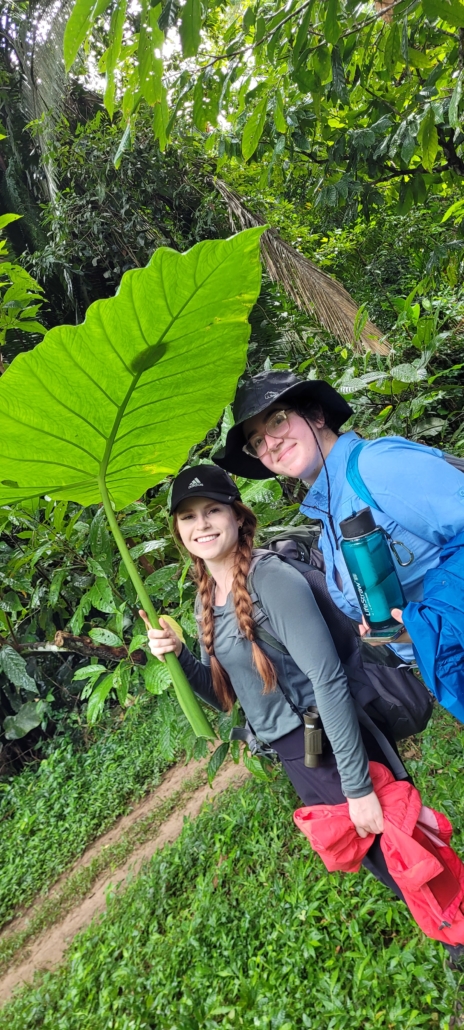
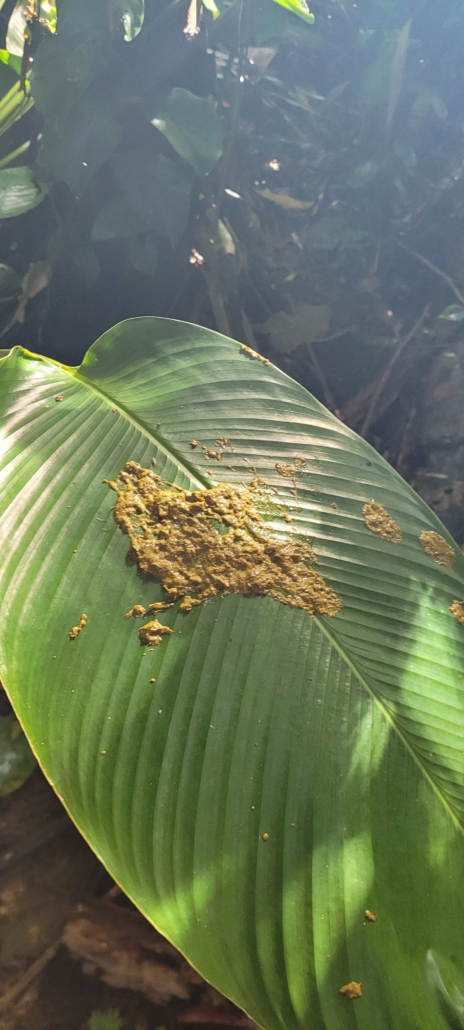
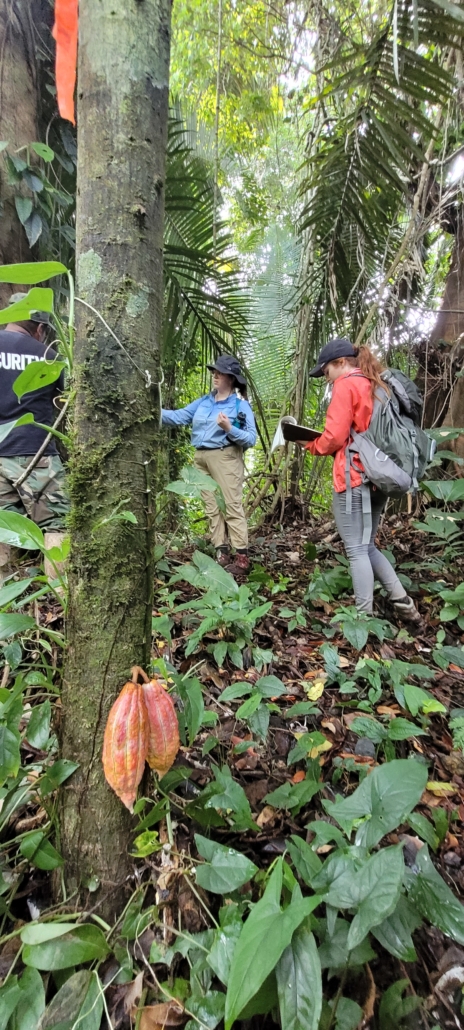
BFREE Wildlife & Conservation Status Directory
/0 Comments/in Bird Conservation, Bladen Nature Reserve, Blog, Research, Uncategorized /by Tyler SanvilleBFREE Program Manager, Tyler Sanville, used data created by visiting and resident biologists to develop a complete list of the known organisms with the exception of snails, insects, and butterflies documented to date in the BFREE Reserve, along with their IUCN Status and Population Trend.
Known species found on the BFREE Privately Protected Area include six endangered (EN), seven vulnerable (VU), and twenty-one nearly threatened (NT) species of wildlife.BFREE’s Wildlife & Conservation Status Directory includes 95 mammal species, 324 bird species, 71 reptile species, 27 amphibian species, and 27 fish species. This list is based on the most up-to-date information available and is by no means complete. You can view the entire list of the nearly 550 species found at BFREE below.
Student Groups Return to BFREE After Two-Years
/0 Comments/in Blog, Cacao, Chocolate, Conservation, Eco-Tourism, Education, Field Course, High School, Student, Uncategorized /by Tyler Sanville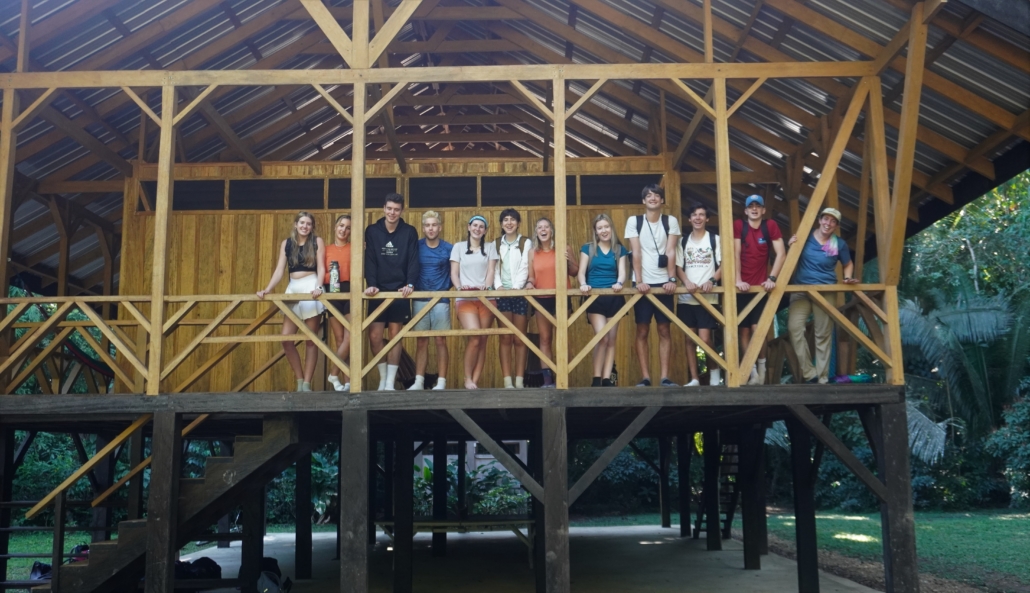
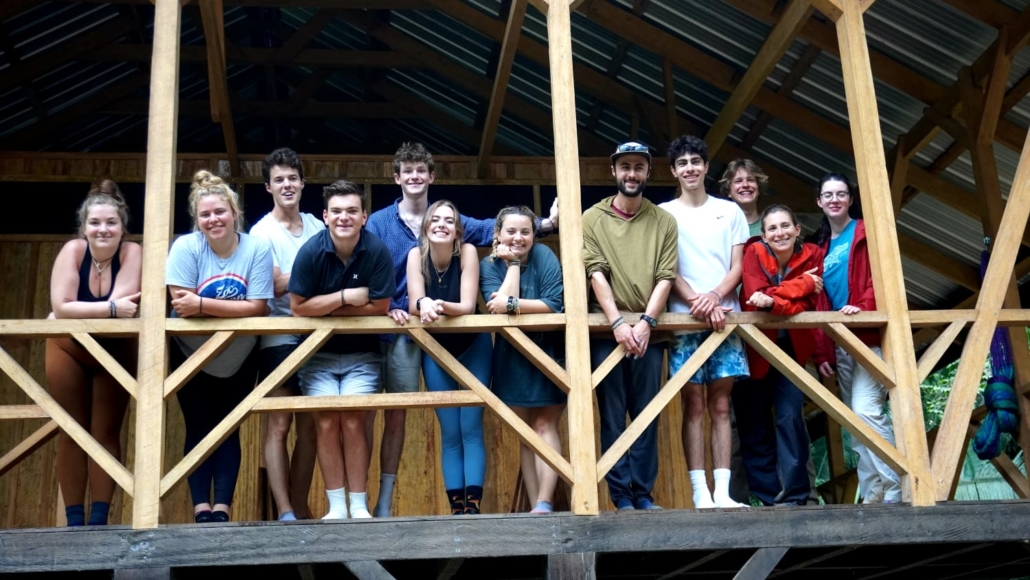
It is no secret that the global pandemic has significantly impacted travel. For BFREE, that has meant a drastic reduction in all types of visitation over the last two years from researchers, specialists, eco-tourists, to our annual Field Courses. However, things are slowly but surely changing, and we are ecstatic to have had our very first student groups back at BFREE since February 2020!
Nearly two years to the day since our last student group, we welcomed two groups from an organization new to BFREE, ARCC Gap Year Abroad. ARCC offers summer and gap year programs for students focused on community-driven and community-led sustainable projects around the world. The two student groups visiting BFREE alternated between 5-nights at BFREE and 5-nights on the Belize Barrier Reef. Each group was made up of ten students and two instructors. The groups volunteered with BFREE’s cacao agroforestry program supporting the growing nursery and painting signs for trees on the farm. Additionally, students learned to make chocolate from bean to bar.
Other highlights include being the inaugural guests to sleep in the newest accommodations at BFREE, The Hammock, exploring the Rainforest on a boundary line hike with Protected Areas Manager, Canti, and meeting and learning from all of the incredible and inspiring staff at BFREE.
These students are part of a 70-day program that will take them from the Rainforest to the Barrier Reef, to sea turtle restoration and surfing in Costa Rica, and finally exploring the Panama Canal over the next two months.
What an amazing adventure these students are on – wishing them all a safe and incredible trip!
Below are a collection of photos taken by BFREE staff and volunteers of both the ARCC GAP GROUPS A and B during their time at BFREE in February 2022.
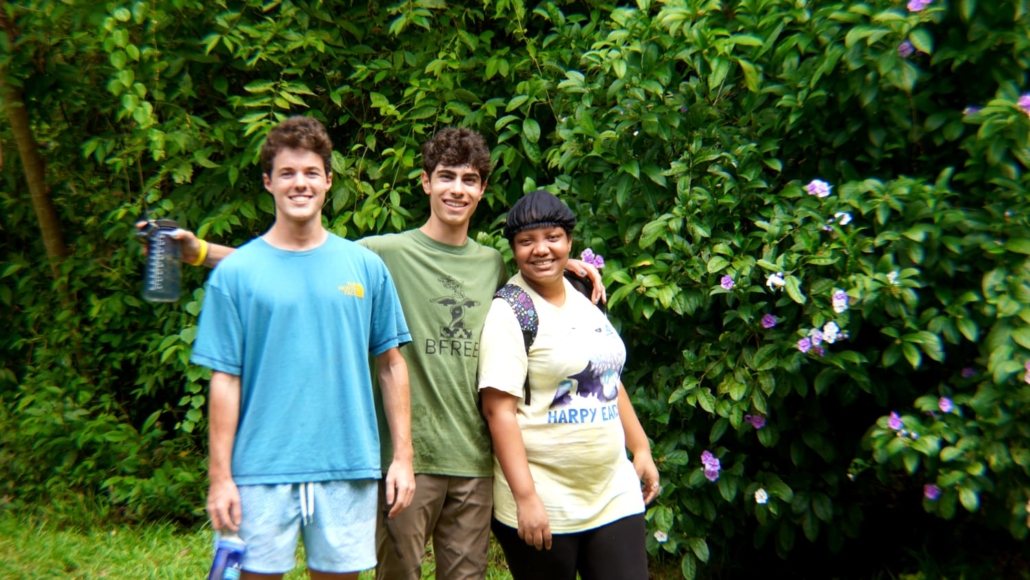
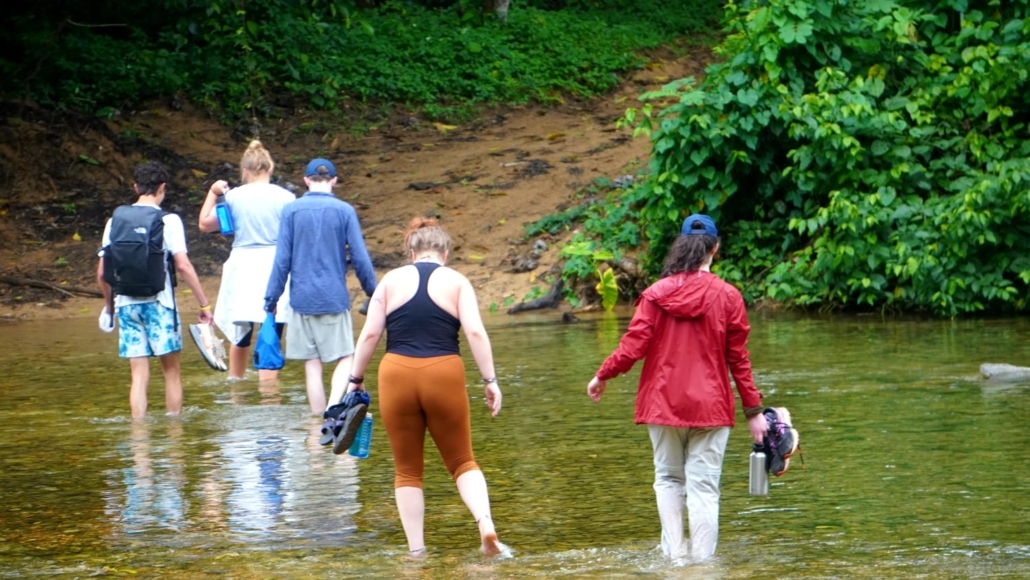
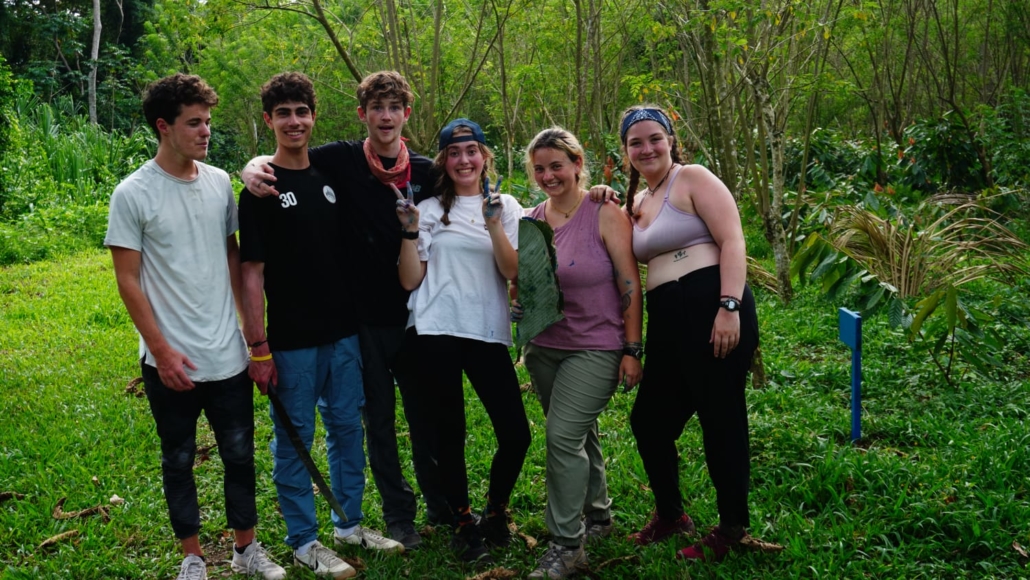
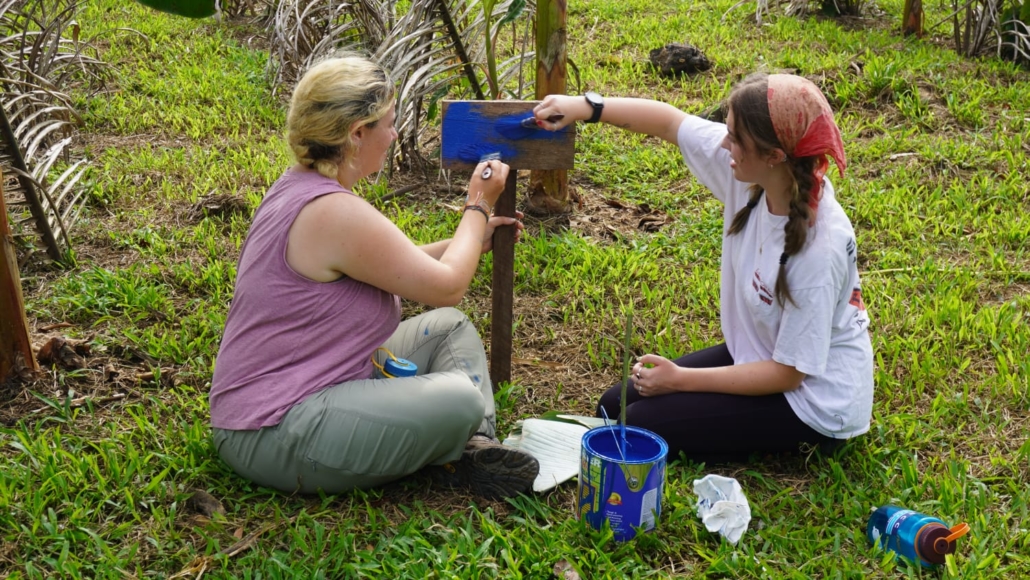


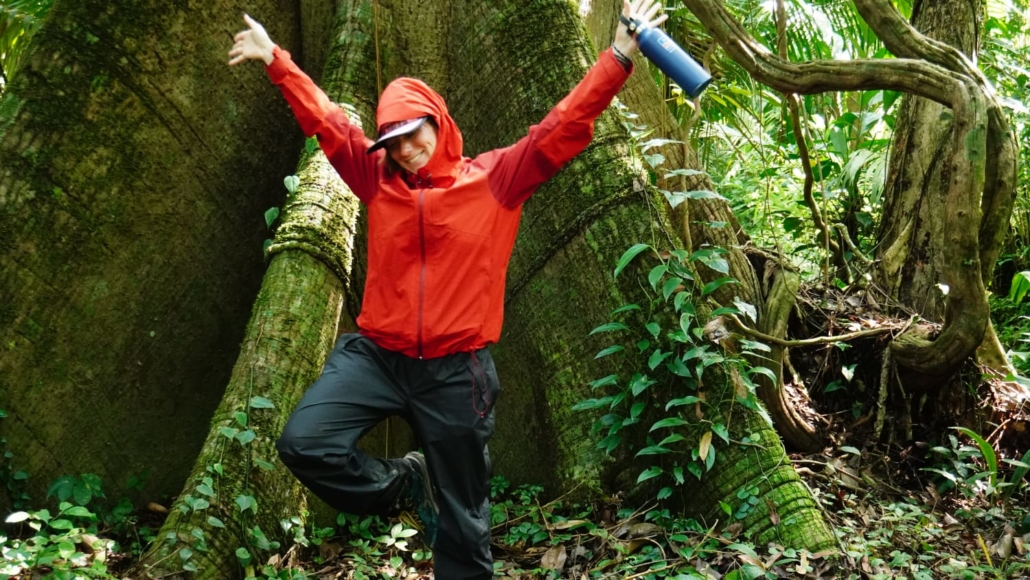



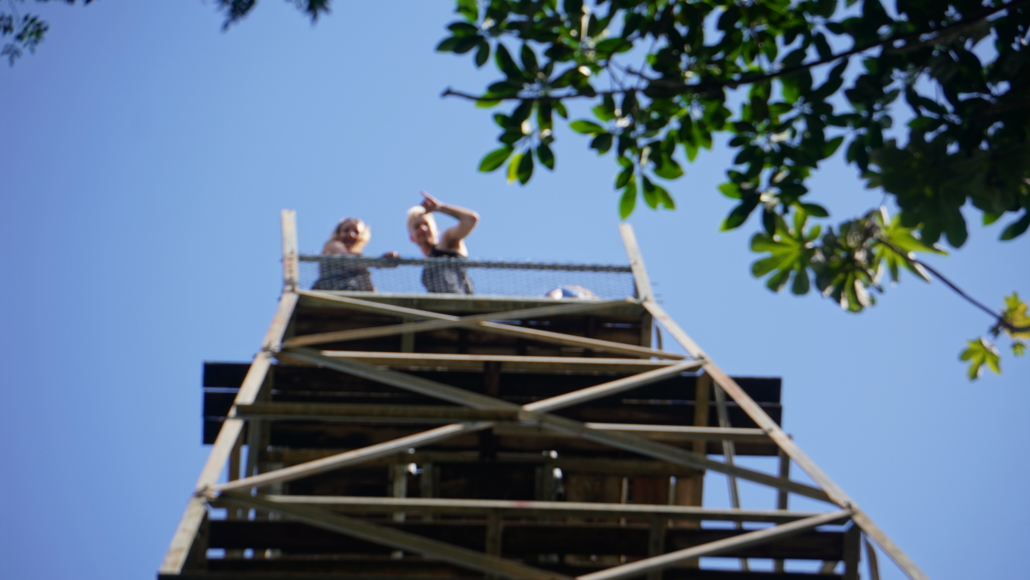
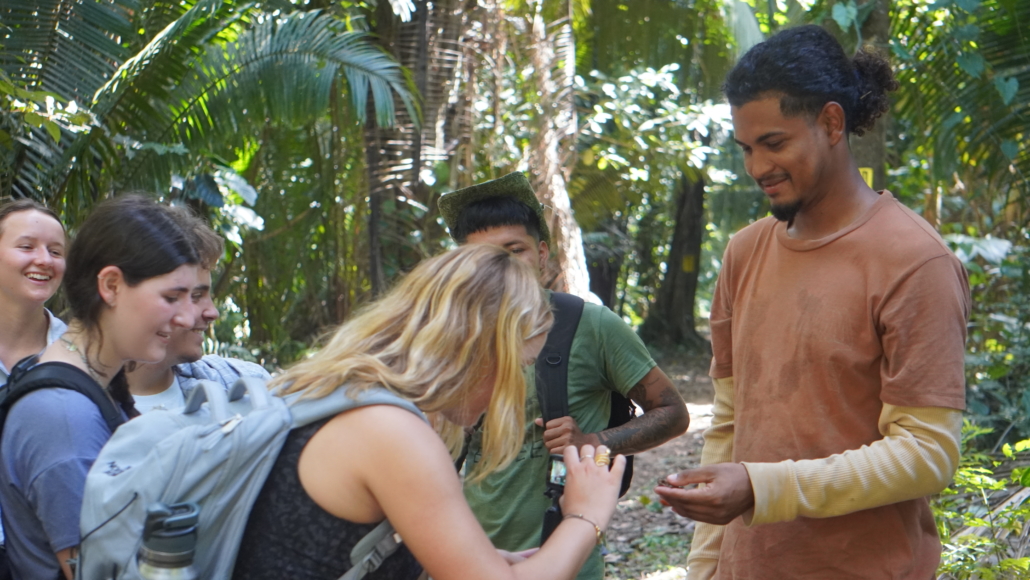

Returning Volunteers are key to the success of bi-annual Hicatee Health Assessments
/0 Comments/in Blog, Hicatee Turtles, Turtle Conservation /by Heather BarrettA team of biologists, veterinarians, and turtle lovers gathered at BFREE in early March for our 14th bi-annual health assessment of the Central American River Turtle locally named Hicatee. We’ve learned so much since our first Hicatee health assessment in September 2014. The act of weighing, measuring, and reviewing the health of hundreds of turtles over the years, has allowed us to refine our methods and be much more focused and efficient than in those early days.
Returning volunteers also help with our improved efficiency during the health assessments. Instead of training a new team on the various protocols, volunteers arrive armed with experience and enthusiasm. We are thrilled that the Dimmitt and Gregory family team have consistently participated in the February/ March Health Assessments since 2019. Their involvement means that BFREE staff along with Wildlife Veterinarian, Dr. Isabelle Paquet-Durand, can jump into the required activities with the knowledge that we have competent volunteers managing each of their assigned roles.
Of her participation in the assessment, Doris Dimmitt stated “We look forward to this every year and are always happy to help in any way that we can.” And help they do. When the Dimmitts and Gregorys arrive, they are always equipped with donated supplies for BFREE and for local schools, and they show up ready for any task. Doris and her husband Rod, whose last visit was late February 2020 just prior to COVID-19 being declared a global pandemic, especially enjoy the time in nature at BFREE and describe their annual trip as a much-needed reboot for their spirit and sense of hope for the world.
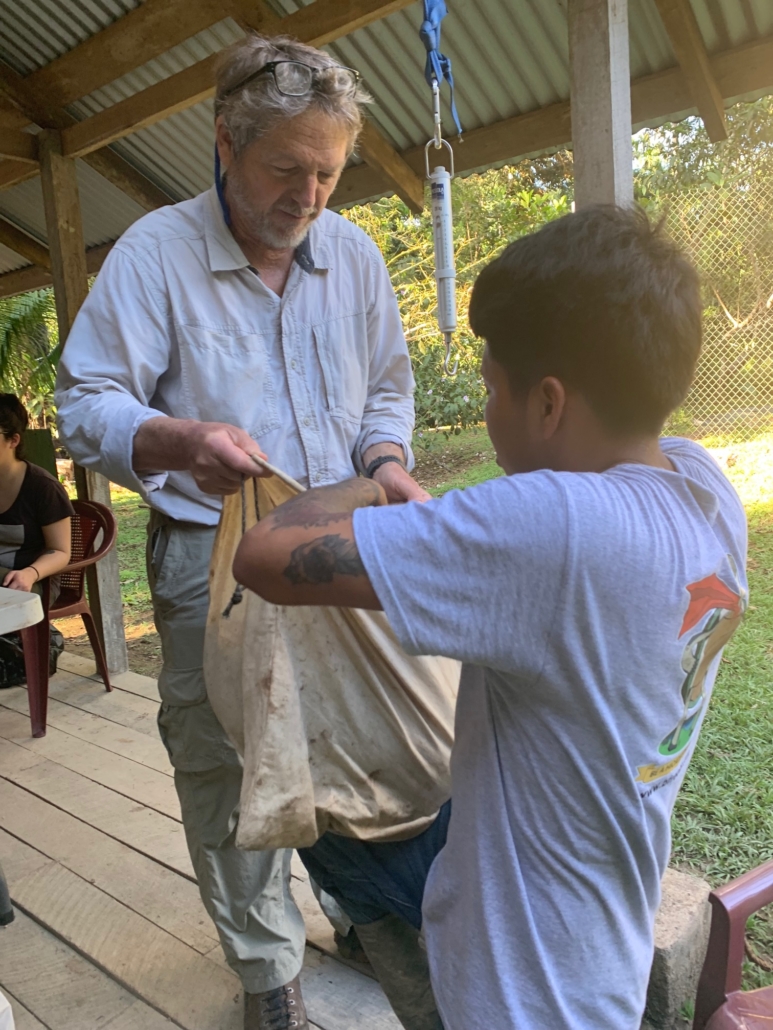
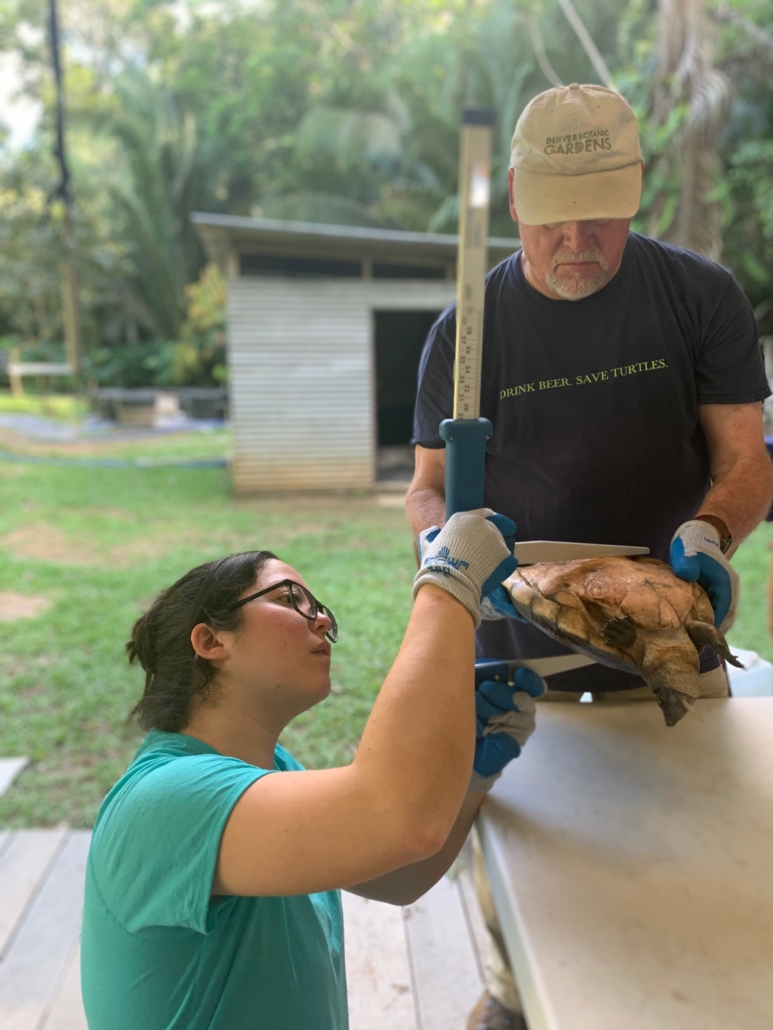
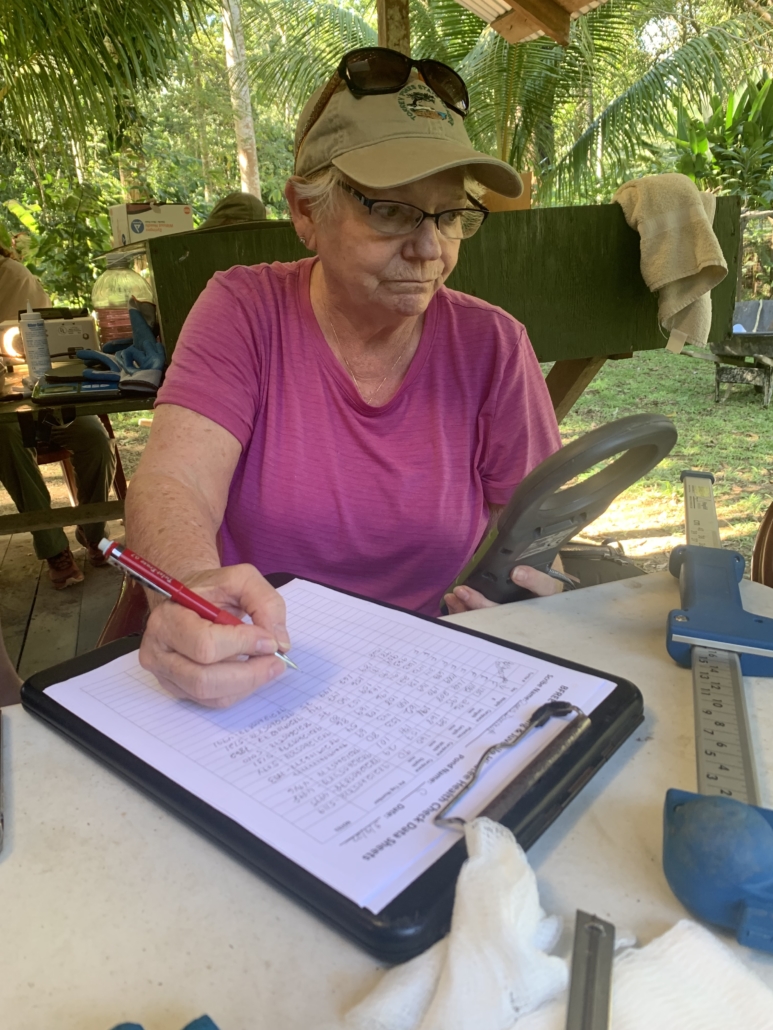
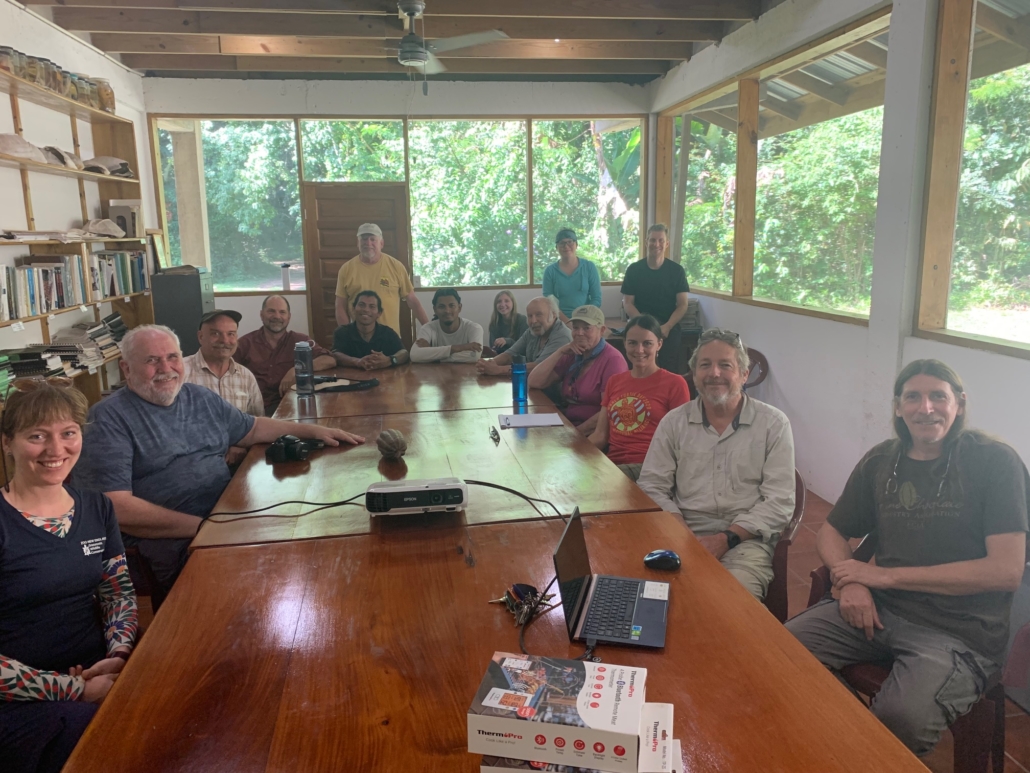
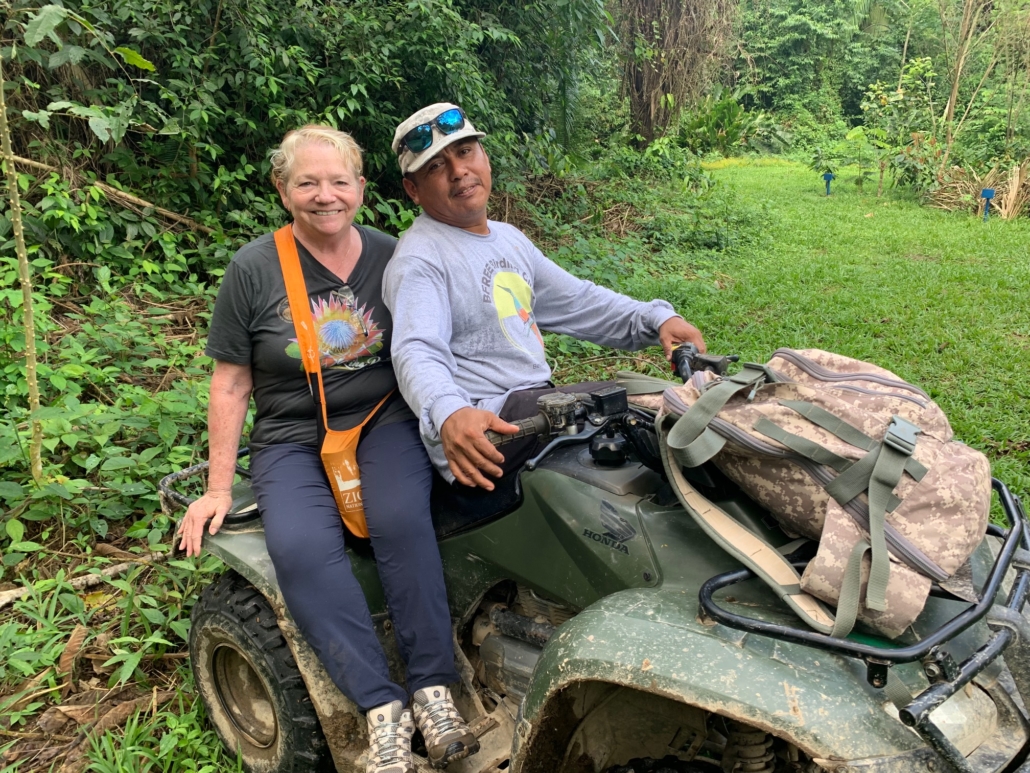
Participants: Zoo New England Staff: Bryan Windmiller and Emilie Wilder; Visiting Veterinarian: Elliott Jacobson, Professor Emeritus, University of Florida, Visiting Biologist: Dave Rostal, Southern Georgia University, Local Veterinarian: Isabelle Paquet-Durand, Visiting Volunteers: Doris Dimmitt, Rod Dimmit, Emily Gregory, Tim Gregory, and Alexi Dart. BFREE staff: Thomas Pop, Jonathan Dubon, Mark Canti, Elmer Tzalam, Jacob Marlin, and Heather Barrett. BFREE Team Hicatee chef: Edwardo Pop.
Thanks to Zoo New England for their support of this health assessment as well as for their on-going support.
Additional Blog Posts About the March 2022 Hicatee Health Assessment:
Introducing the Dermatemys Program Coordinator
/0 Comments/in Blog, Central American River Turtle, dermatemys mawii, Hicatee Turtles, Turtle Conservation, Uncategorized /by BFREE ContactBy Jacob Marlin
After 12 years of raising awareness and developing a strong Hicatee conservation program, BFREE in partnership with the Turtle Survival Alliance (TSA), is pleased to announce the creation of the new position of Dermatemys Program Coordinator within the BFREE organization. We have contracted Dr. Ed Boles, a naturalized Belizean who brings more than three decades of experience and leadership from a freshwater ecological perspective, along with strong relationships with government, NGO’s, and local community members. Dr. Boles will help foster the necessary collaborations needed to create a holistic regional program to ensure the Hicatee has the best chance of survival into the future.
Dr. Boles began his new role on February 1st, 2022. The two of us are already working closely together along with other BFREE and TSA staff and local community members to become fully acquainted with the many activities, accomplishments, challenges and stakeholders involved in the conservation and sustainable use of the species. In the coming months, we will be advertising for an “Assistant Dermatemys Program Coordinator” position to be filled on July 1st, with the intention that the assistant position will slide into the coordinator role after Dr. Boles completes his one-year contract.
We have ambitious goals for 2022, and we are excited to keep you posted on our efforts to advance the conservation of this unique and culturally important species.
Autumn Dietrich Completes 10-week Internship at BFREE
/0 Comments/in Blog, Cacao, Conservation, Eco-Tourism, Fellows, Internship, Student, Uncategorized /by Tyler SanvilleBFREE internship opportunities have returned since the start of the COVID-19 pandemic. After more than two years of not hosting interns, Autumn Dietrich is welcomed with open arms to BFREE for a 10-week program from January to March 2022.
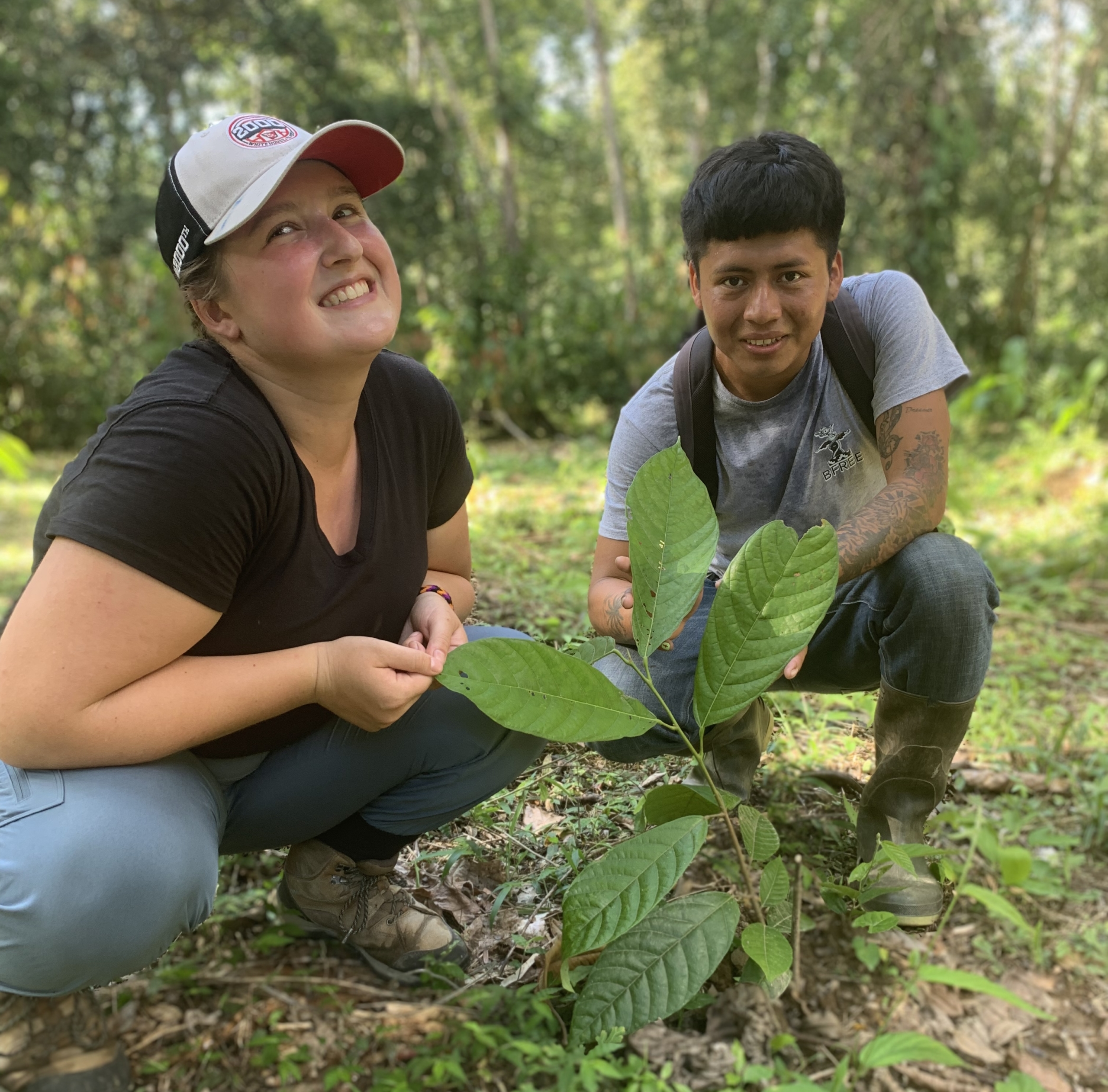
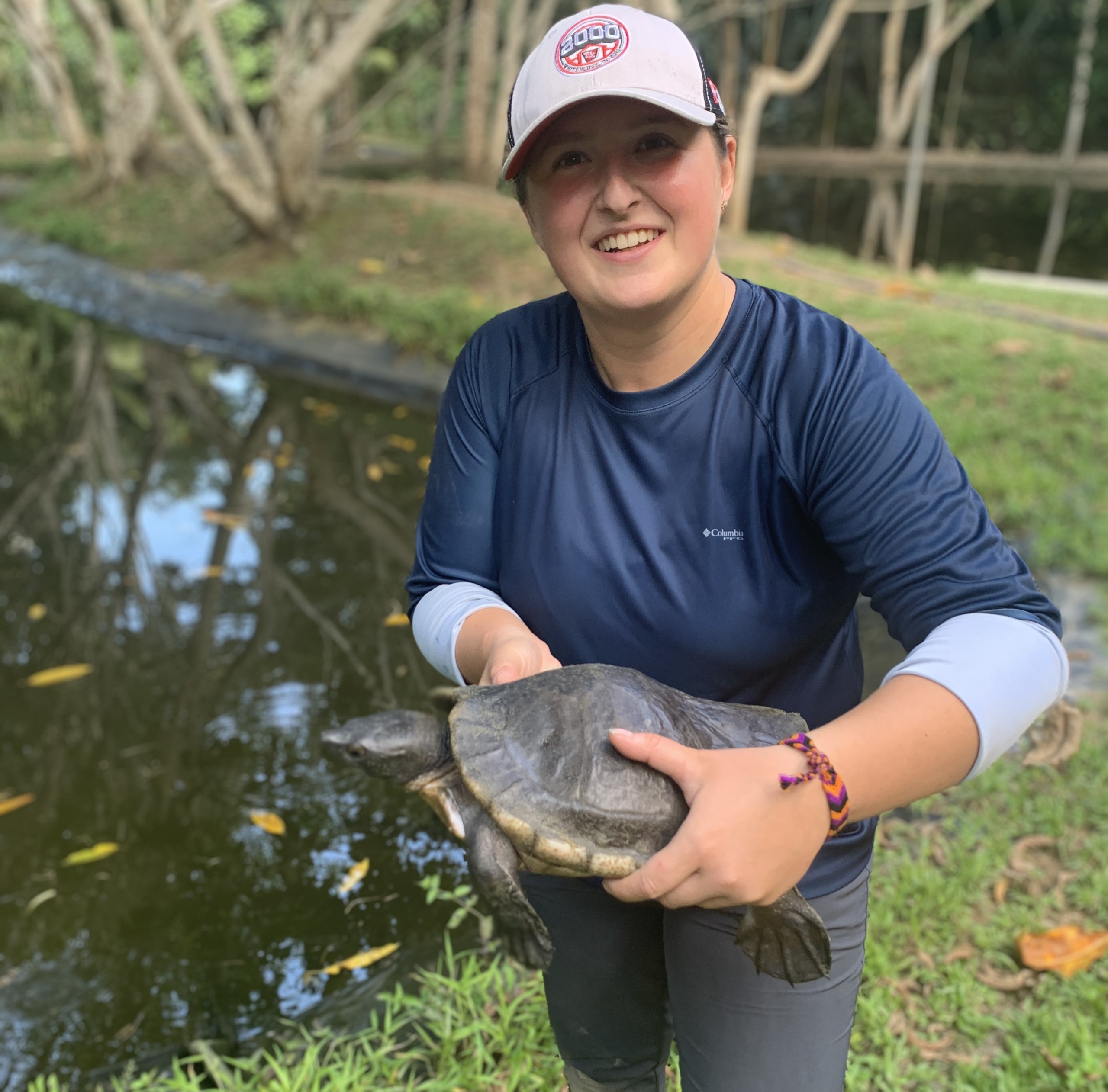
Autumn is no stranger to BFREE. She first visited on a Field Course as an undergrad with Western Michigan University in 2018. On a hike with Protected Areas Manager, Sipriano Canti, Autumn describes the experience as having changed her life. Impressed by the sheer scale of life that existed at BFREE, she hiked with her fellow classmates winding through trees, climbing embankments of creeks, and cutting through giant leaves. The hike led the group to the Ranger Observation Post on the boundary of BFREE and the neighboring farming village of Trio. Autumn’s excitement turned to dismay as she witnessed for the first time the harsh boundary line between a healthy and thriving forest and a large expanse of farmland. At this moment, she felt an overwhelming feeling that she wanted to help make a difference and help support protected areas. She knew she would come back to BFREE.
After graduation, Autumn applied to return to BFREE as an intern for three months, April – June 2020. At the time, we had no idea we would soon be facing a global pandemic. Determined not to give up on her dream to return to BFREE, Autumn’s postponed trip came to fruition this year when she traveled to Belize in January.
Autumn worked alongside BFREE staff during her ten-week internship, providing invaluable support. Her first week was spent documenting and assisting a research crew from Kutztown University. They are establishing a long-term experiment that quantifies the influence of Yucatán black howler monkeys on biodiversity and ecosystem function in Belize. She then assisted Cacao Fellow, Mark Canti on a large-scale survey of the cacao farm to determine the farm’s overall health. When not focused on collating the cacao survey data, Autumn assisted Housekeeping Manager, Ofelia Cus with preparing accommodations for visitors and BFREE Chef, Edwardo Pop in the kitchen.
In addition to supporting BFREE’s various conservation initiatives, Autumn, immersed herself in learning and experiencing Belizean culture. She was honored when Operations Manager, Elmer Tzalam and his wife Gina invited her to spend a weekend with them at their home in Golden Stream. Autumn loved spending time with Elmer and Gina’s two children, Esther (12) and Travis (9), and enjoyed a delicious homemade dinner of panades, a dish that’s similar to empanadas but with a Belizean and Mayan twist.
Living full-time at BFREE for ten weeks brings plenty of challenges. The remote location and intense heat are not for the faint of heart. However, Autumn not only thrived during her two+ months, but she also brought so much joy and laughter to the BFREE community. Thank you so much, Autumn, for your sincere dedication to BFREE’s mission and for being an incredible and loyal team player. We all look forward to seeing you amongst the giant ceibas again one day!
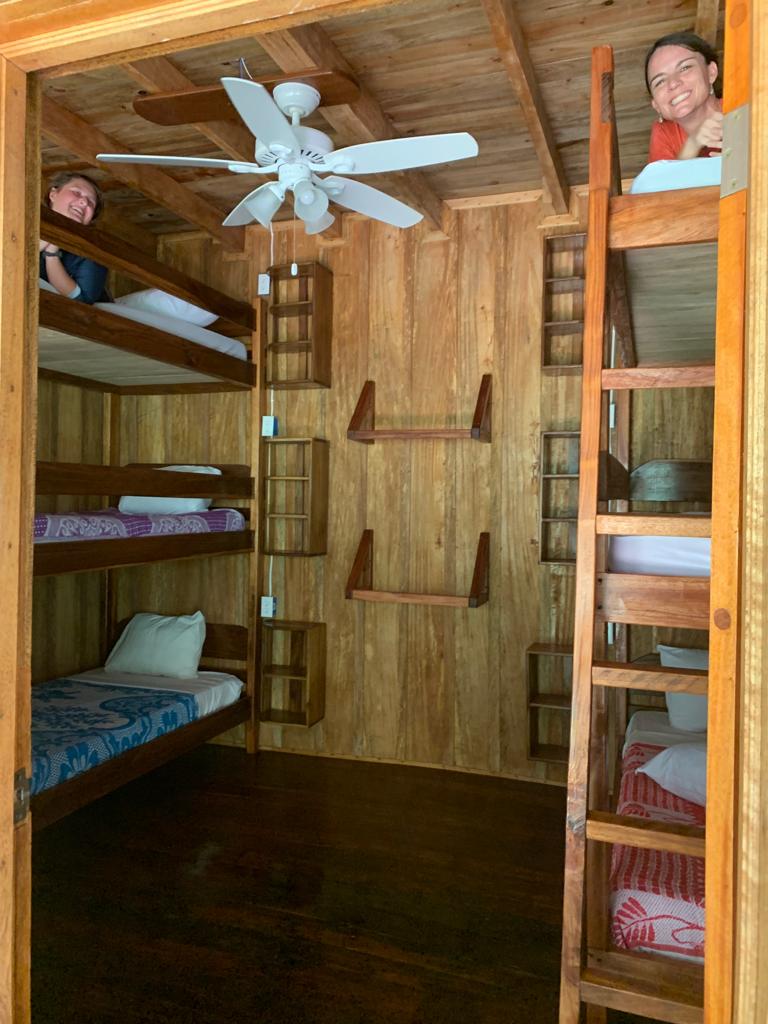
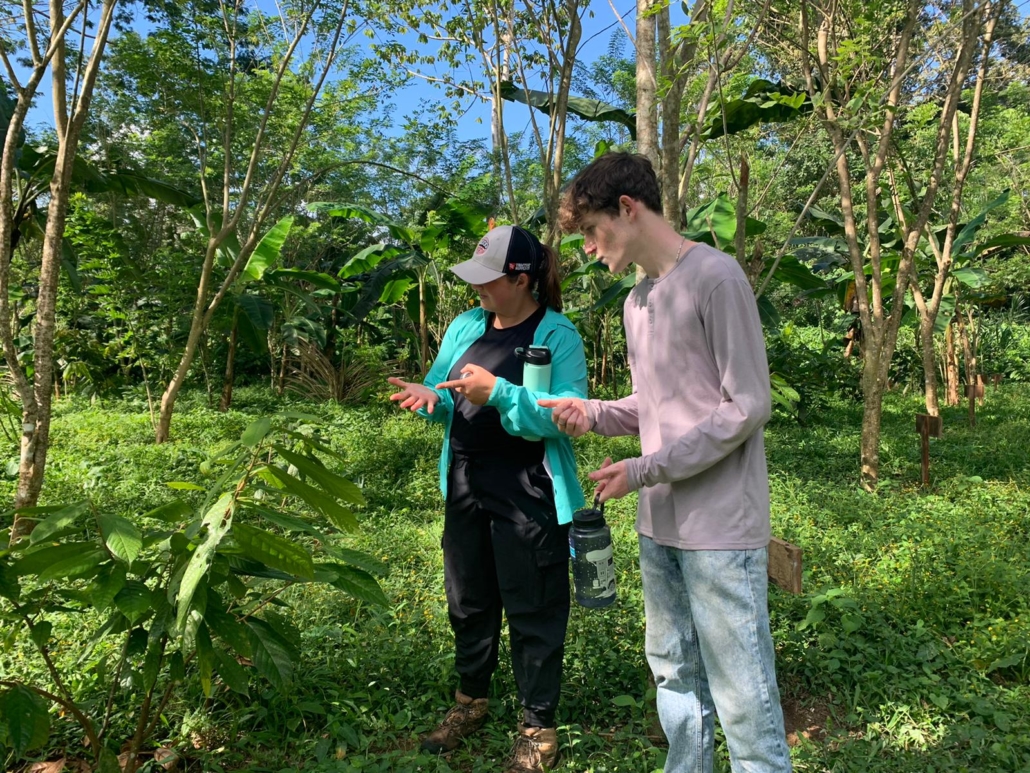
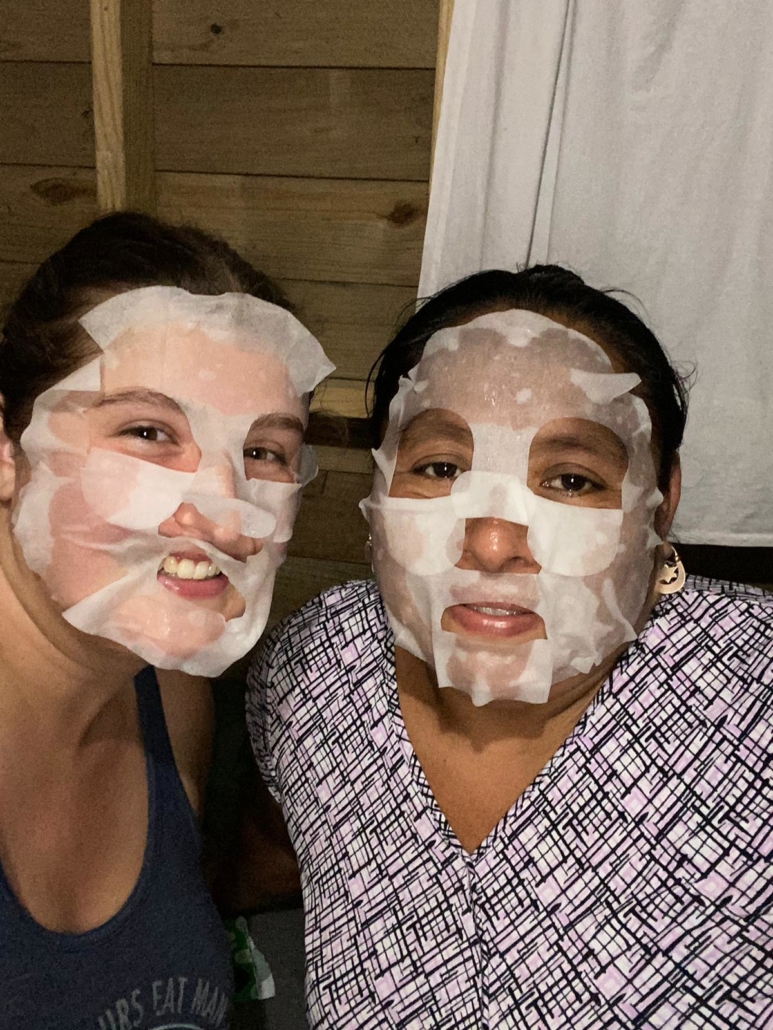
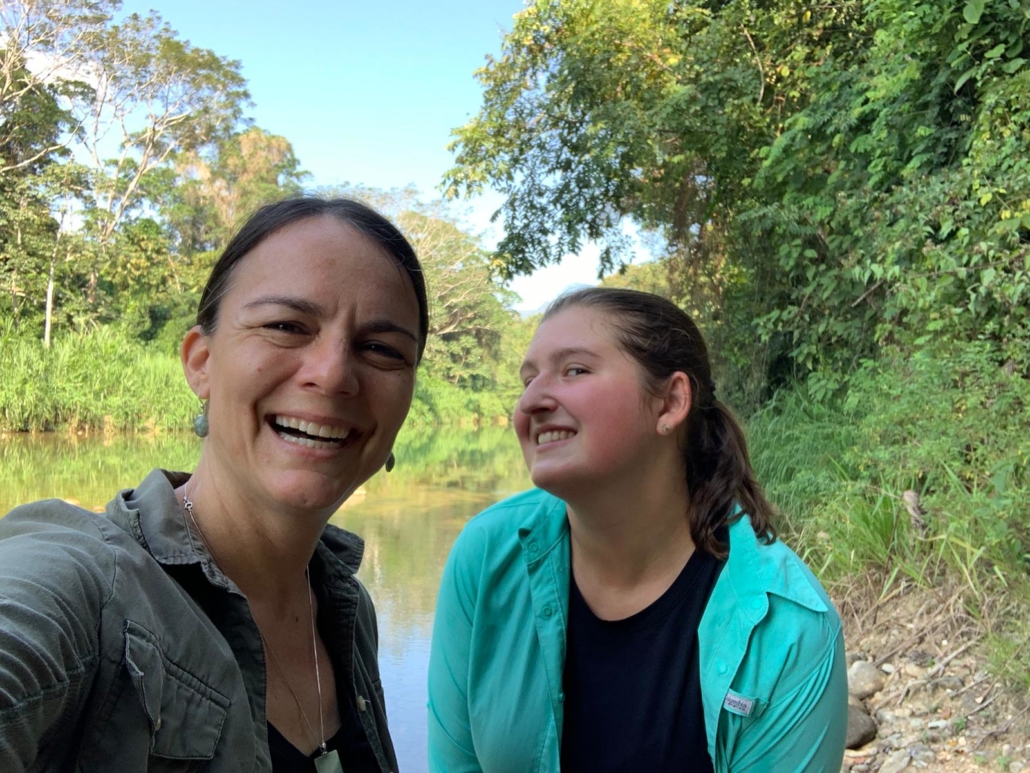
Feste Film Crew Visits the HCRC
/0 Comments/in Blog, Central American River Turtle, dermatemys mawii, Hicatee Turtles, Turtle Conservation /by Heather BarrettIn collaboration with the European Nature Trust, The Feste Film crew has been traveling throughout Belize, documenting the country’s many important conservation initiatives since January.
This week, the crew stopped at BFREE to learn about our work to preserve the critically endangered Central American River Turtle, locally known as the Hicatee. They are interviewing BFREE staff at our Hicatee Conservation and Research Center (HCRC) and learning about our captive breeding program and rewilding goals for this critically endangered species.



